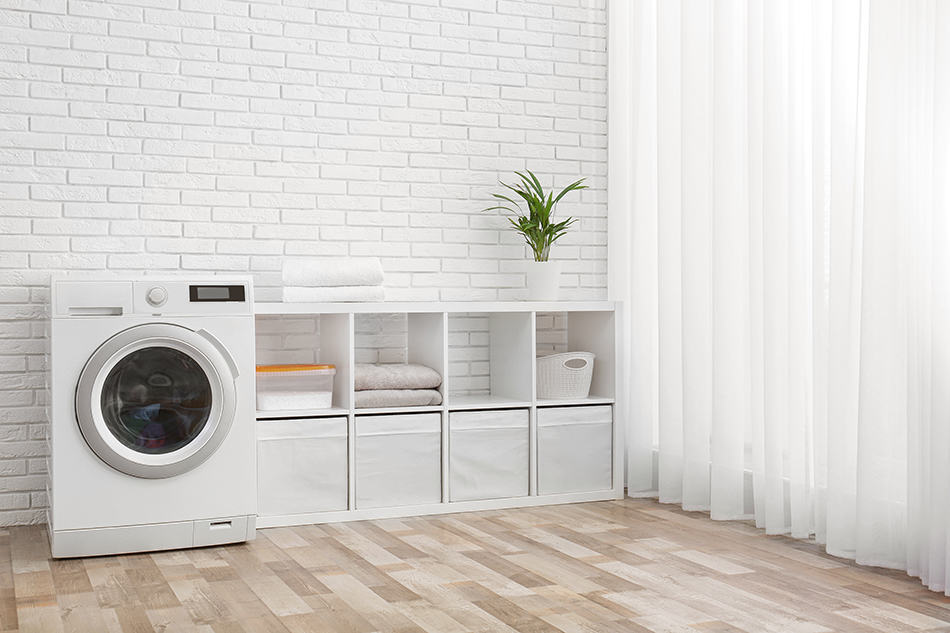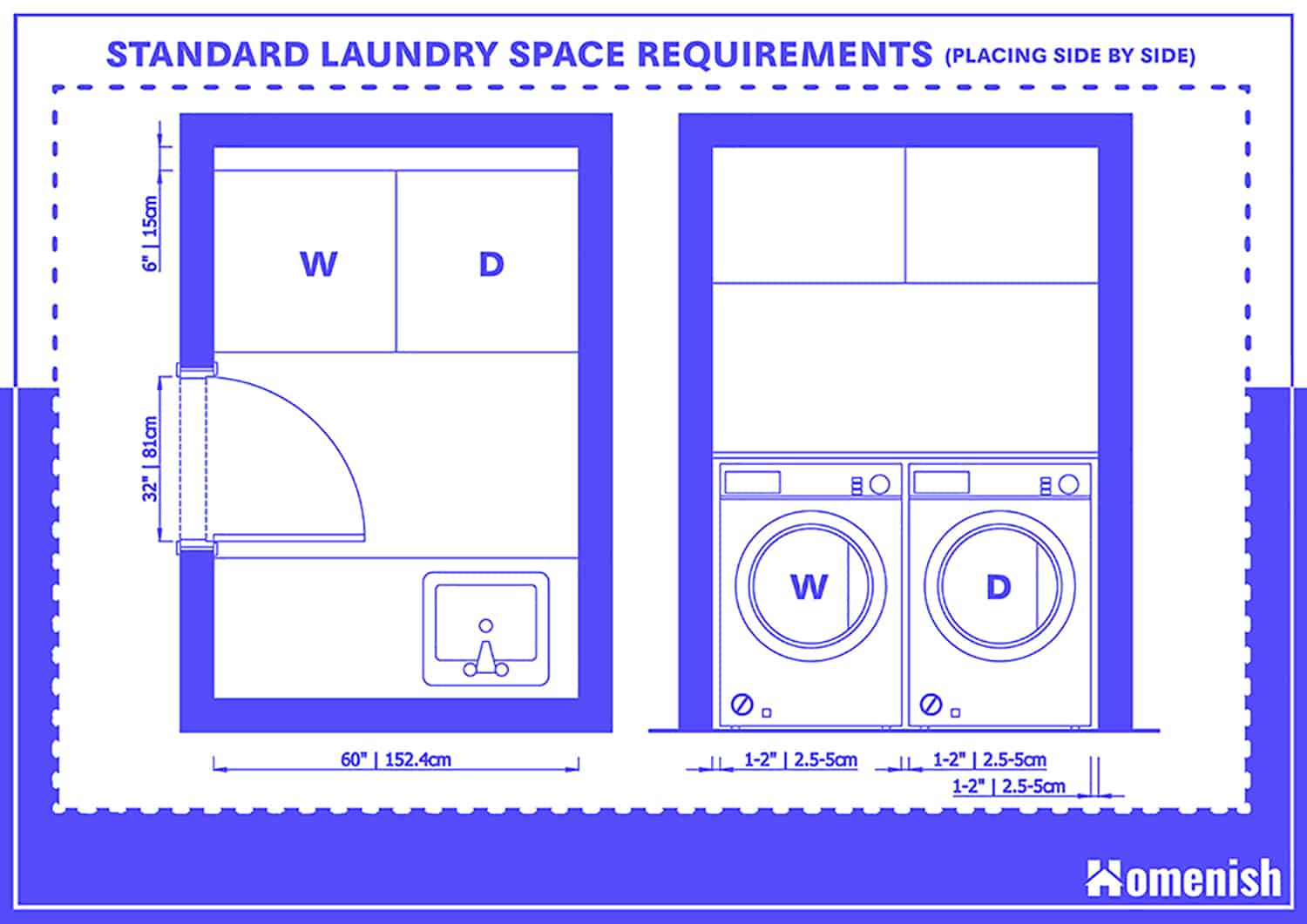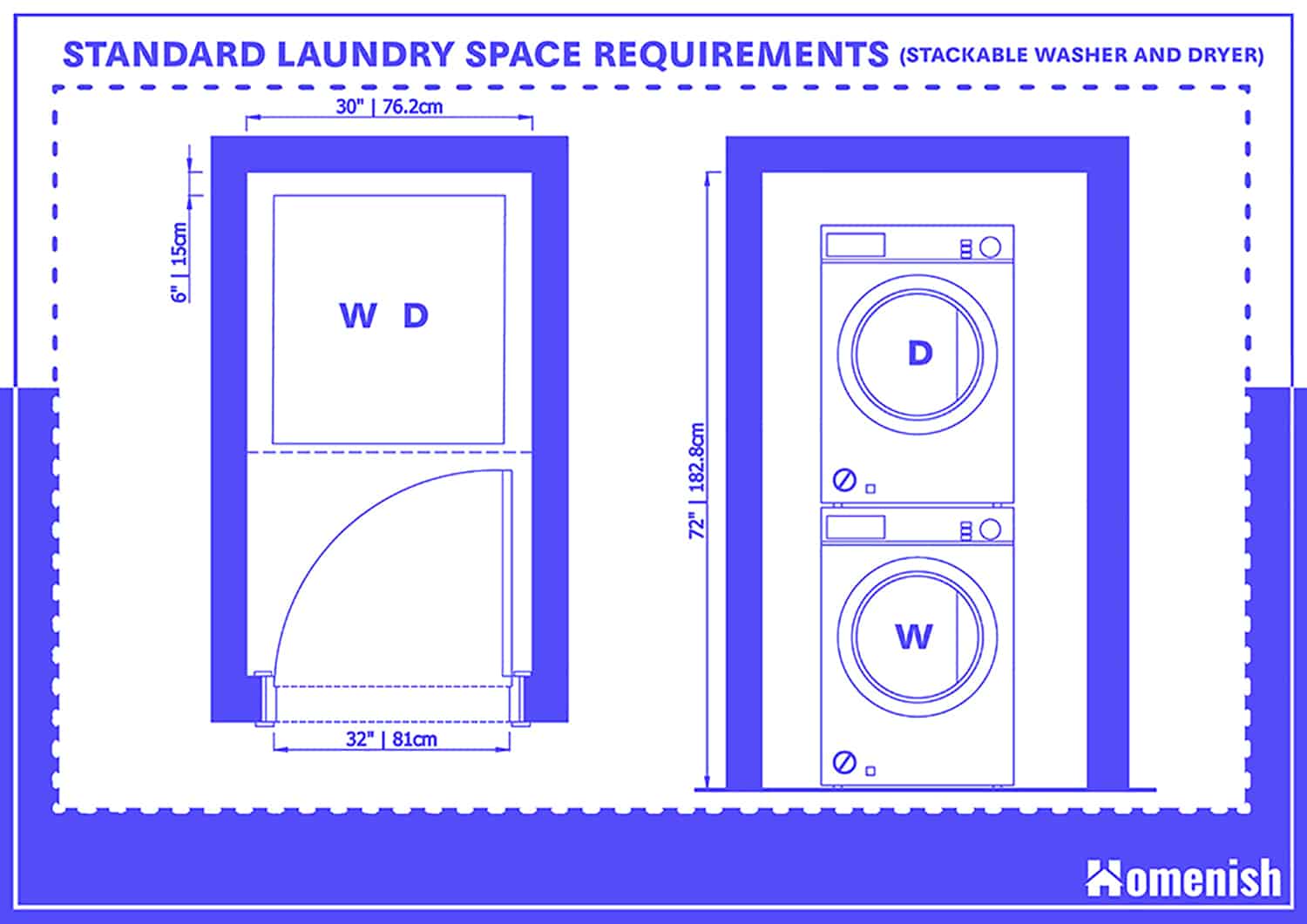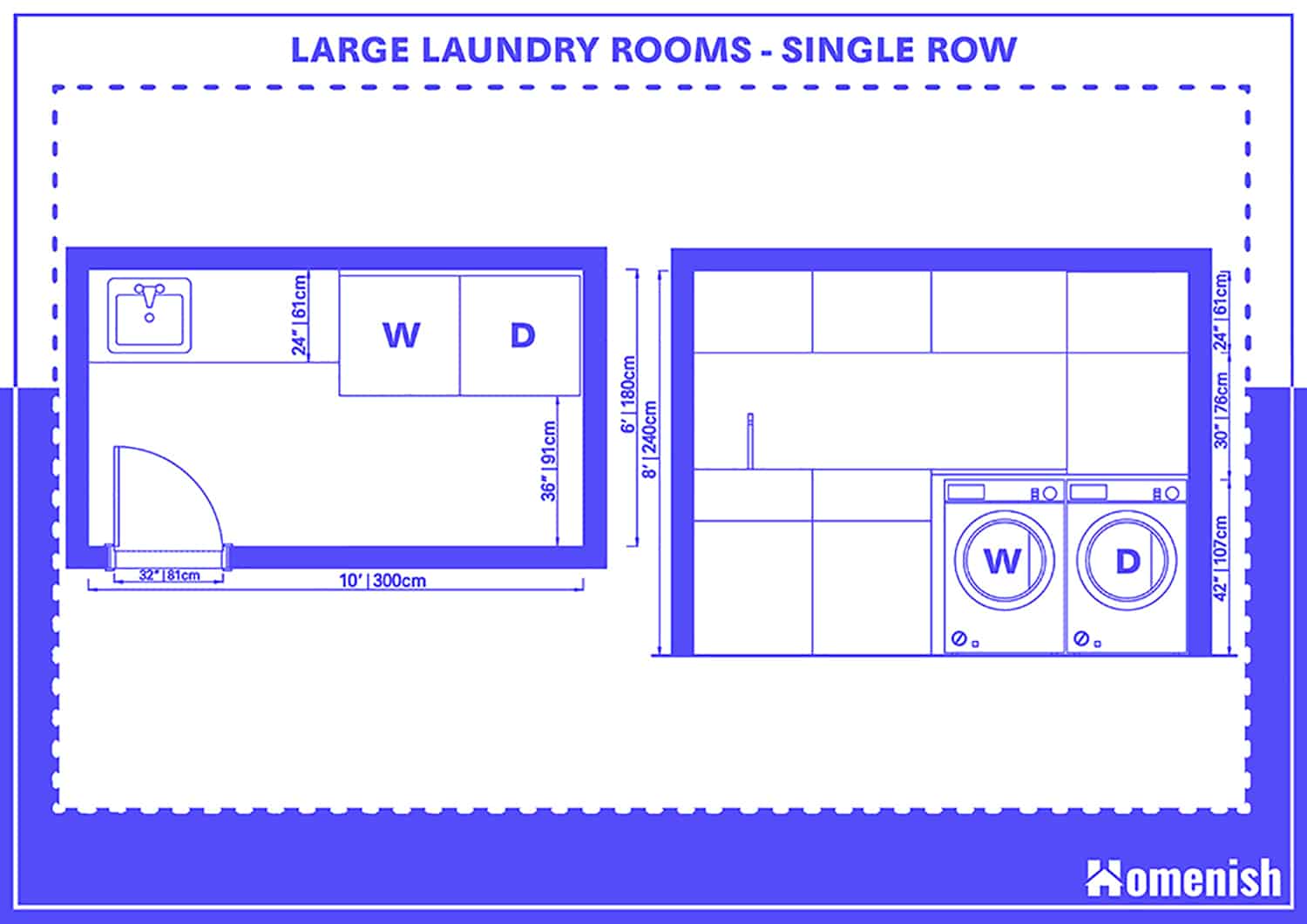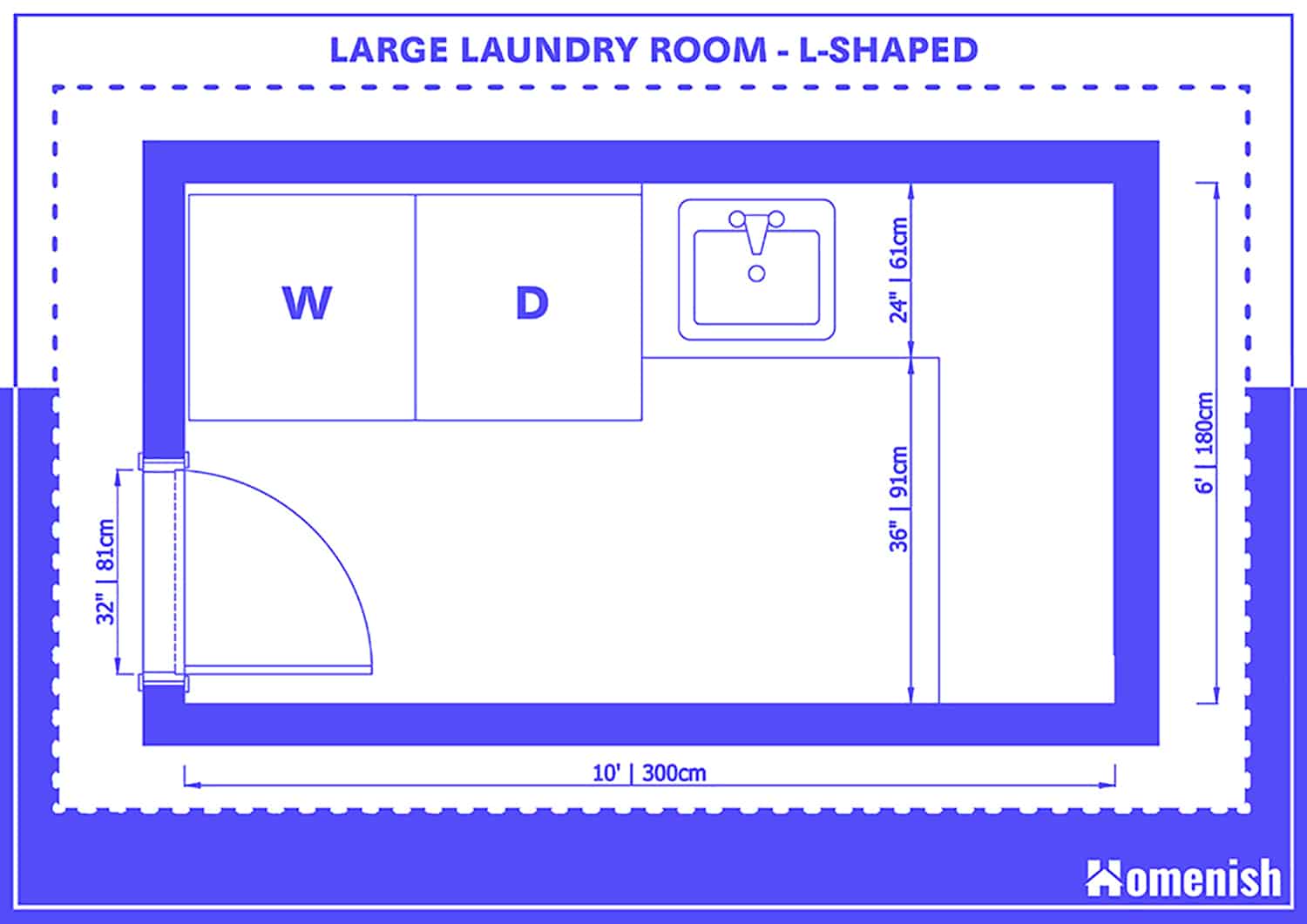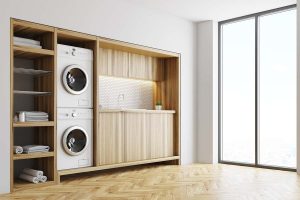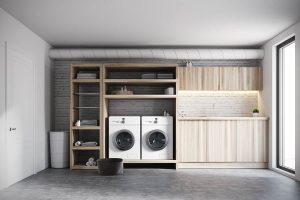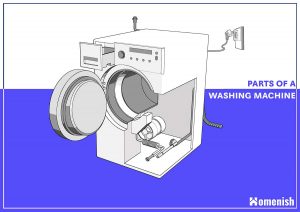The laundry room is an often-overlooked part of the house. It takes the backseat behind the living room, the dining room, the bedroom, and even the kitchen. But the importance of the laundry room cannot be understated. It is, after all, that part of the house where we wash, sort, and fold clothes. For most households, it is also the part of the house where laundry products and equipment are stored.
Therefore, it is only reasonable that you build a functional and workable laundry room. It should have plenty of natural light, counter space, and secure storage. Whether you’re building a new house or remodeling your abode, there are some dimensions, specifications, and requirements to keep in mind when designing the laundry room.
Standard Space Specifications for Dryers and Washers
Two appliances are considered as fixtures of laundry rooms– washers and dryers.
The sizes of dryers and washers vary depending on their manufacturers. In the United States, the average washer measures 27 inches wide and around 25 to 28 inches deep. On the other hand, the average dryer measures 36 inches deep. The height of these machines is around 36 inches for top-loading models and roughly 34 to 39 inches for front-loading types.
On the other hand, the washers and dryers in Europe are measured in the Metric system so if you’re buying overseas, remember to convert the measurements. Compared to their counterparts manufactured in the United States, washers and dryers made in Europe are smaller in all three dimensions. On average, a washer in Europe measures 60 cm wide, 85 cm tall, and 60 cm deep.
Placing Washers and Dryers Side by Side
Now, if you’re placing the washers and dryers side by side, you’d need a horizontal space of around five feet or 60 inches. You’d want to add more space for hoses and venting.
Also, an inch or two on each side and in between the appliances would help lessen the noise from vibrations. If you are opting for a top-loading washer, you should have at least 16 inches of clearance above the appliance so that you can open the door.
Stacking the Washers and Dryers
In case you’re stacking the washer and dryer, allot for a vertical clearance of 72 inches, while the horizontal clearance should be at least 30 inches. You should also take into consideration the depth of the appliances and allot six inches for the hoses as well as venting and air circulation.
You should also make sure that the entryway to the laundry room is wide enough to accommodate the moving of the washers and dryers. To make a 90-degree turn, you’d need a width of at least 45 inches.
The door of the laundry room must also be 32 inches wide at the minimum. The wider the door, the better as it gives you more room to move around. Consider having a pocket door because it won’t take up a wall or floor space when opened. If a pocket door isn’t feasible, pocket door alternatives, like sliding barn doors or folding doors, can also save space without sacrificing accessibility.
Laundry Room Floor Plans & Layouts
There are various laundry room layouts. Below, find two common layouts and the room sizes with the specific dimensions of each item.
Single Row
You can have a functional laundry room with just 60 square feet (10′ x 6′). In this layout, all items including the washer, dryer, and sink are placed on one side.
The other side with around 36″ is left empty for comfortable spacing. The door is opposite to the sink and is measured at a minimum of 32″ (81cm) wide.
L-Shaped
To make the most of the space, an L-shaped layout is suggested. In this layout, the washer and dryer are laid side by side in one corner on the left, while the sink and the counter will occupy both corners on the right. Again, the door should be a minimum of 32″.
Standard Specifications for Work Space
You’d want to have at least 18 inches of free counter space on one side of your washer. This would give you enough space to work on pre-wash preparations, such as adding stain removal treatments.
Keep in mind that most lower cabinets are designed for a countertop height of 36 inches. While this is comfortable or enough for food preparation, it may be too high when folding laundry, especially when you are working on large items. Therefore, you’d want a countertop or table with a height of 30 to 33 inches.
You must also provide around 48 inches of clearance if you are to have front-loading machines. This would give you enough room to walk around open doors. You may use storage pedestals for storing and lifting front-loading machines. However, the downside is the lack of workspace on top of the appliances. Instead of using storage pedestals, install the appliances under a counter to provide you with lots of space for folding laundry.
You may even consider adding space to hang fresh clothes straight from the dryer. You can opt to install sturdy clothes rods that hang from wire shelving. Or you may install clothes rods between upper cabinets. Just make sure that the rods are positioned far enough from the wall and leave enough space for the hangers.
Another possible space-saving solution is to buy a double-tier clothes rack on casters or a wall-mount clothing valet that flips down to hold hangers when you empty the dryer. When not in use, it can fold up against the wall.
Other Construction Specifications
Most households have the laundry room in the basement and for a good reason. It’s humid and away from the main rooms of the house, including the bedroom and living room, and thus won’t cause unwanted noise.
If noise is a concern, you can add extra insulation to the walls and floor. This should help in reducing noise pollution in other parts of the home. You should also have a floor drain to protect the rest of the house in case a washer hose breaks, or in the event, the washer overflows.
You can have wet and dry zones to make the laundry room more efficient. You can do it by placing the laundry sink and washing machine next to the streamlined plumbing lines. This way, you can keep the ‘wet’ tasks together. The clothing rod, meanwhile, should be placed beside the dryer.
Of course, a professional electrician and plumber can provide you with the specifications for the gas, electrical, and water lines so that your laundry room would be up to code in your area.
Remember always to use the appropriate kind of electrical connections and avoid the use of an extension cord. Plan the dryer placement in such a way that the vent hose will be as short and straight as possible. This would lead to quick and safe drying, reducing risks of fire with shorter venting.
